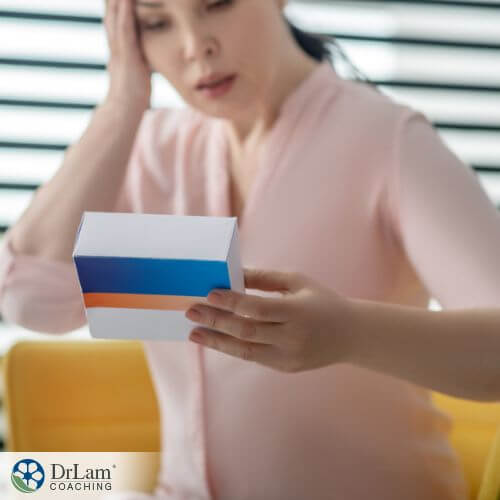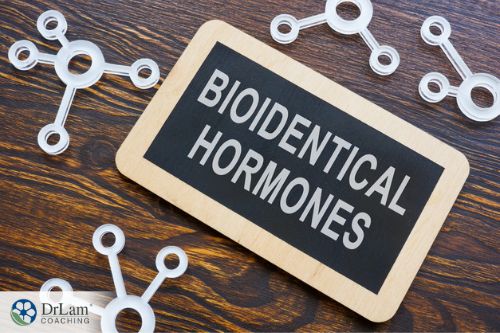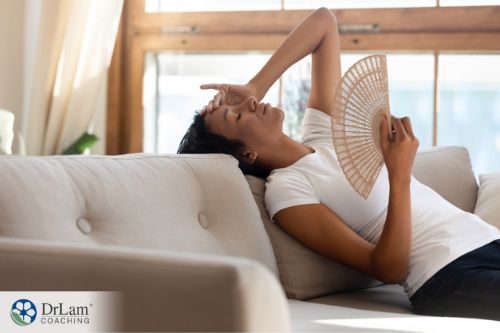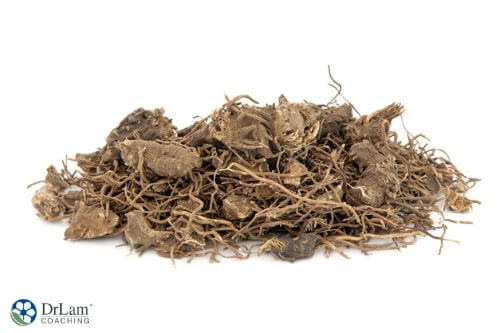 Menopause! That time in a woman’s life when her hormones go haywire, hot flashes abound, mood swings hit you unexpectedly, and you see an increase in fat around the belly without knowing why. And these are just a few of the symptoms. All this happens because, essentially, your hormones are no longer in a state of balance. Hormone replacement therapy (HRT) or hormone pellet therapy, sounds to many women like a wonderful way of dealing with these symptoms. But is HRT or hormone pellet therapy safe? Are other alternatives better?
Menopause! That time in a woman’s life when her hormones go haywire, hot flashes abound, mood swings hit you unexpectedly, and you see an increase in fat around the belly without knowing why. And these are just a few of the symptoms. All this happens because, essentially, your hormones are no longer in a state of balance. Hormone replacement therapy (HRT) or hormone pellet therapy, sounds to many women like a wonderful way of dealing with these symptoms. But is HRT or hormone pellet therapy safe? Are other alternatives better?
We tend to talk about menopause as the period where we begin to see a decline in hormone production. However, this period is technically referred to as perimenopause (menopause is when your period has been stopped for a year).
This period in a woman’s life often sees a host of symptoms associated with a decline in certain hormones. To combat these issues, many women take hormone supplements, usually an estrogen-progesterone combination. Progesterone may help protect against bone loss or cancer of the uterus. Estrogen may help address vaginal dryness or hot flashes.
Hormone replacements, when systemic in nature, involve hormones traveling through your bloodstream. Local hormone replacements, in contrast, affect only a certain targeted area.
Sometimes these hormones are in a premade formula, while other healthcare professionals use custom compounds. They first check your hormone levels through saliva testing and then, utilizing a compounding pharmacy, have a hormone blend made specifically to suit you. Do note, however, that these custom drugs do not fall under FDA regulation.
Hormone replacements come in many different shapes and forms.
Examples of systemic hormone therapy include pills, gel, creams, sprays, or skin patches. These typically deliver higher estrogen doses. Hormone pellet therapy, which sees hormone pellets embedded under the skin, tends to affect a slow release of hormones that is also systemic in nature.
The more localized form of hormone replacement, like vaginal preparations, contains lower estrogen levels. These include creams or tablets. They usually only address urinary or vaginal menopausal symptoms.
In women who still have a uterus, a healthcare practitioner usually suggests the use of both progesterone and estrogen. Only using estrogen increases your risk of developing endometrial cancer. In women who have undergone a hysterectomy, on the other hand, a healthcare practitioner would probably suggest the use of progestin (a medication similar to progesterone) alone.
While many women find relief from using these hormones to deal with the various symptoms of menopause, there are also risks. The most serious of these usually come into play when undergoing this type of treatment for longer periods. Using the incorrect hormones or balance of hormones also increases your risk. Amongst the possible risks are:
Women who have, or previously had, certain types of breast cancer should not consider HRT. Neither should those with a history of heart disease, stroke, or blood clots. Other considerations that may add to your risk of other health issues include your age, the type of HRT, and your family history. HRT is not considered safe for women over sixty or in women who have a family or medical history of heart disease, liver disease, cancer, blood clots, or stroke.
We usually tend to talk about women specifically when referring to hormone replacements. Men, however, also suffer from hormone imbalances. Many men also benefit from hormone replacement therapy, albeit using different hormones from those used by women. Men may be advised to use testosterone. Hormone therapy for men may help conditions such as anxiety, low sex drive, decreased bone density, and andropause.
 The pellets used in hormone pellet therapy are manufactured. They are typically made of bio-identical hormones and binders to keep them together. The most commonly replicated hormones used in hormone pellet therapy include estrogen, testosterone, and progesterone.
The pellets used in hormone pellet therapy are manufactured. They are typically made of bio-identical hormones and binders to keep them together. The most commonly replicated hormones used in hormone pellet therapy include estrogen, testosterone, and progesterone.
Although first used in the late 1930s, hormone pellet therapy declined in popularity in subsequent years because of the advent of synthetic oral hormone supplements. It is, however, making a comeback.
In hormone pellet therapy, hormones such as progesterone, estradiol, testosterone, or a combination, are put into small cylinders and inserted under your skin. The site of insertions is either the hip, upper buttock, or lower abdominal wall. The implant then continuously releases small doses of hormones. This mimics how your body would normally release these hormones. The hormones, absorbed by your body, directly go to your tissue without any alterations in your liver.
Hormone pellet therapy has physiological as well as lifestyle advantages.
Possible complications associated with embedding a pellet include some bleeding, bruising in the area, infection, skin discoloration, and even pellet extrusion. Pellet extrusion, although not common, refers to your body’s rejection of what it perceives as a foreign object.
You may also notice some side effects after receiving hormone pellet therapy for the first time. This is usually only temporary. However, as with other HRT forms, you always run the risk of overdosage. In other words, receiving too many hormones.
Many times pellet therapy can cause an overdose in hormones that is very hard to reverse as it's difficult to take out the pellets after insertion. For this reason, those with adrenal fatigue or other conditions resulting in a sensitive constitution should be very wary of hormone pellet therapy.
Amongst the possible risks associated with incorrect hormone dosage in hormone pellet therapy are:
In men, the possible disadvantages also include irritability and an increase in aggression.
Most of these disadvantages are due to hormone imbalances.
Your hormones play a vital role in important body functions. These include your circadian rhythm, body temperature regulation, metabolic processes, stress response, growth and development especially in children, reproduction, and feelings of hunger or satiety, to name but a few.
And a common cause of a hormone imbalance is stress. Even going through menopause can be a stressor. The most common way conventional medicine addresses these issues is by means of HRT or hormone pellet therapy.
 Your Hormone Circuit is part of your body’s NeuroEndoMetabolic (NEM) stress response.When stress kicks in and activates your NEM, you see a marked increase in stress hormone production. This is perfectly normal and usually abates once the stressor passes. But with continuous stress, you see a continuous NEM response and thus a continuous higher stress hormone production.
Your Hormone Circuit is part of your body’s NeuroEndoMetabolic (NEM) stress response.When stress kicks in and activates your NEM, you see a marked increase in stress hormone production. This is perfectly normal and usually abates once the stressor passes. But with continuous stress, you see a continuous NEM response and thus a continuous higher stress hormone production.
Unfortunately, a continuously higher stress hormone production results in the overuse of key precursor hormones. This, in turn, results in less of these hormones being available for other much-needed hormones. Most of the precursor hormone pregnenolone, for example, may be used for cortisol, the stress hormone, instead of to produce needed estrogen or progesterone. Some of the symptoms associated with this include estrogen imbalance, fertility issues, fatigue, mental health issues like depression or anxiety, and weight gain. This condition is known as Adrenal Fatigue Syndrome.
Going through menopause, something which does put some stress on your body, has many of the same symptoms. Menopause and adrenal fatigue have many similar symptoms. By addressing hormone issues for both, we may find improvements in both conditions.
Probably the best way to address hormonal imbalance issues would be by using natural bioidentical hormone sources. In other words, using natural sources containing hormones almost identical to those found in humans. Doing so may prove a natural and safer alternative to manufactured hormone replacement therapies.
The most commonly used natural bioidentical hormone sources contain estrogen, testosterone, and progesterone. These natural alternatives may allow you to avoid some of the risks associated with HRT or hormone pellet therapy.
Note, it is always best to talk to a doctor before starting any new herb or supplement to avoid surprising and unwanted side effects.
Marjoram, an herb of the Origanum genus, has long been used in traditional medicine. Literature suggests it can improve levels of estradiol, an estrogen steroid hormone found in the ovaries. It could also assist in blood sugar management because of its apparent ability to reduce insulin levels. Literature also suggests it can influence your cortisol levels and thus help address stress.
Ashwagandha, also called Indian ginseng or winter cherry is from the nightshade family of plants. It is an adaptogen that helps relieve stress by its moderation on your Hypothalamic-Pituitary-Adrenal (HPA) axis. Your HPA axis plays a role in hormone release. The adrenal glands specifically play a role in the release of cortisol during your body’s NEM stress response.
Besides having a mitigating effect on cortisol levels, literature also suggests that it may help address other hormone issues, including those pertaining to your reproductive hormones, insulin, and thyroid hormones. However, make sure not to take adaptogens without giving your adrenals the right nutrients first.
Nigella sativa is also called kalonji, black cumin, black seed, black cumin seed, or fennel flower. Literature suggests Nigella sativa helps regulate testosterone, luteinizing hormone, thyroid hormone, and insulin levels. It may also act similarly to estrogen in your body. This is due to the presence of a plant compound called thymoquinone.
 Black cohosh is often referred to as rattle weed or bugbane. This herb is from the same plant group as Nigella sativa. It may also act as a phytoestrogen, in other words, act like estrogen. The herb has long been used to address issues pertaining to women’s health. These include menopause and any issues relating to menstrual irregularities and premenstrual syndrome.
Black cohosh is often referred to as rattle weed or bugbane. This herb is from the same plant group as Nigella sativa. It may also act as a phytoestrogen, in other words, act like estrogen. The herb has long been used to address issues pertaining to women’s health. These include menopause and any issues relating to menstrual irregularities and premenstrual syndrome.
Chasteberries, the fruits of the chaste tree or Vitex agnus, contain diterpenoid compounds. These may have beneficial effects on certain hormones such as dopamine and prolactin. We often find elevated prolactin levels in those suffering from PMS. This implies that chasteberry may have hormone-balancing properties.
You may never rectify a hormonal imbalance, and many have to learn to live with the symptoms. You can, however, do much to help your body stay healthy and reduce some symptoms.
No matter what course of action you take when trying to correct a hormone imbalance, always do so with the help of a qualified healthcare provider. They are best able to determine the effectiveness or suitability of a particular course of action based on your health history.
Furthermore, for best results, make sure to get your labs checked frequently. This will best allow your healthcare advisor to adjust your therapy as and when necessary. Too many hormones have just as high a health risk as too few.
If you have a hormonal imbalance, here are a few things you can do to help alleviate the situation.
If you would like to know more about hormone pellet therapy, the team at Dr. Lam Coaching can help. We offer a free* no-obligation phone consultation at +1 (626) 571-1234 where we will discuss this type of therapy and other options. You can also send us a question through our Ask The Doctor system by clicking here.
Hormone pellet therapy is considered safe by most people in the field of medicine. But it may have certain drawbacks, especially for certain individuals. Your healthcare practitioner is best able to judge its suitability or give other alternatives that work for your situation.
